| Article Overview:
Is embedding journalists in American fighting units good or bad for
the war? Does it give Americans a clearer or foggier look at
what's happening? Can it shift an anti-war, anti-American
attitude into a pro-military one? Find out. |
 VigilanceVoice VigilanceVoice
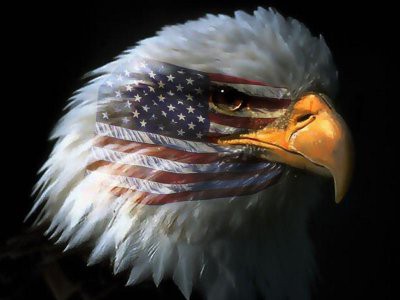
www.VigilanceVoice.com
Wednesday--April
2, 2003—Ground Zero Plus 567
___________________________________________________________
Embedding Vigilance,
Ejecting Terror
___________________________________________________________
by
Cliff McKenzie
Editor, New York City Combat Correspondent News
|
GROUND ZERO, New York City, Apr. 2--I am impressed with the word
"embed," as used in the "embedding" of journalists with coalition
forces. I am impressed because I think we are embedding Vigilance and
ejecting Terrorism in America's generally liberal, anti-military,
often anti-American press. Let's find out if there's any
hint of truth to my theory. First, let's look at what the
word embed conjures.
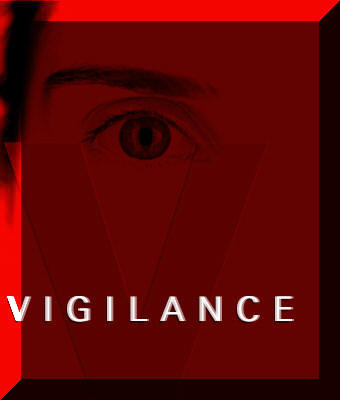 |
|
Are we
embedding Vigilance and ejecting Terrorism? |
The embedding process
sounds like a tic burrowing its way into a fat vein on a dog.
It sounds viral, like some disease
locking its way into a host.
Embedding is not
a flattering word. It suggests the host is unwilling
or reticent to accept
whatever is embedded. It makes me think that whatever is
embedded enslaves its host, like a pacemaker, which is small, but the
heart doesn't work without it, and the body can't function without the
heart.
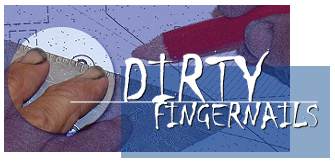 |
|
Dirt can be
embedded in fingernails |
I think of dirt being
embedded in things, like the soles of jungle boots, or under
fingernails after working on a car engine.
Embed also connotes propaganda.
I have visions of the Manchurian Candidate where the queen of clubs(or is
that spades?) flashes and triggers the embedded message of
assassination to kick in.
Or, as in the most recent Alias spy television series, where the star,
Jennifer Garner, cuts into the wrist of a prisoner played by Christian
Slater to remove an embedded transponder set to release cyanide into
his blood stream. Jennifer (Sydney) saves Slater at the last
minute.
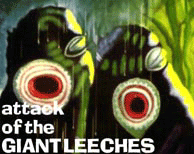 |
|
"Embedded"
makes me think of leeches |
I also think of leeches when I hear the word, "embedded."
I imagine them shoveling their heads deep into the flesh, sucking off
the blood.
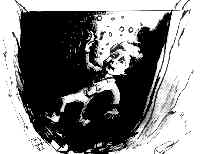 |
|
Embedding conjures up a grave for me |
Embedding also means a
grave for me. I sense myself in a deep hole, covered with
dank dark dirt, moss, musty leaves and branches. I am
embedded in death.
Embed also implies
that whatever is embedded is more alive than dead, like embedding an idea in someone's mind.
I think of a worm or a termite, wriggling its way through the grey
matter, embedding certain
thoughts, prejudices, opinions on this synaptic and that synaptic bridge.
Sometimes these thoughts form a freeway, but not easily, since there
are an estimated 5 billion such synaptic bridges in a human brain.
So when I hear the
words: "Embedded Press," or an "Embedded Reporter," or an
"Embedded Journalist," it seems oxymoronic to me. It
suggests to me you are embedding a Terrorist into a Sentinel of
Vigilance's bloodstream, or injecting a cancer cell into a healthy
body.
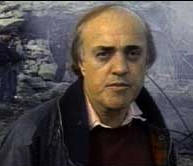 |
|
Embedded
reporter Peter Arnett was fired by NBC and National Geographic -
see yesterday story
(link here) |
Shoving a reporter into a war machine is putting a square block in a
round hole. It's like having a proctologist hidden under
the outhouse. Or putting a minister in brothel.
Having
the press look over your shoulder and report everything you do and how
you do it isn't a relaxing way to fight a war. You are
forced to keep an eye out for the enemy in
front of you, and the one behind you, disguised as a reporter.
The camera lens is a much a weapon of mass destruction as a rifle or a
rocket filled with Vx.
The oxymoron of "embedded reporter" means that journalists, news persons,
reporters, are bound by being embedded to not disclose the truth.
The truth is the sum of the good and the bad, but an embedded reporter
can't express the bad and remain embedded. If he or she
attacks the host, the host will eject the reporter.
The firing of Peter
Arnett for giving an interview to Iraqi television that cast doubt on
America's tactics and strategy is one example. Vigilance has
little tolerance for Terrorism.
The rumor that Geraldo Rivera
was ejected for drawing maps in the sand, considered an act of
exposing a military location, is another example of round hole and
square peg conflict between "embedded" and "reporter." They are
opposites, unequals, unless forced to coexist.
When a reporter
accepts being "embedded" into a unit, both the host and foreign object
(the reporter) must give up something for there to be peace.
The reporter must give up the desire to attack the host, to Terrorize
it from within. And the host must give up the desire to keep
secret its actions, and open itself up to inspection.
The two--the
press and the military--have been foes for many years.
Nothing irks the liberal media more than expenditures for the military
versus the domestic needs of the country. The military is also
the iron-fist of America's power, its brass knuckles, its club, and is
treated with wariness by the press, as a rabid beast might be given a
wide swath.
Now,
the two are married.
Symbiosis
exists between the reporter and the military unit he or she is
attached to. The link between the reporter and the
military unit forms a life or death umbilicus. In combat, the reporter relies
on the troops to help keep him or her alive. When the
bullets stop flying, the troops count on the reporter to report the
truth of war, not the lie.
And this is
the great benefit of the embedded reporter. For the
embedded reporter faces the truth as never before witnessed.
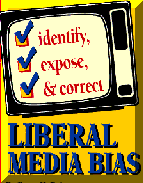 |
|
The embedding
reporting process may promulgate fair reporting |
Historically, the media is liberal, anti-war, anti-military,
anti-violence, anti-American in nature. To support the
principles of America's military might seems to most news media a
violation of free speech. The media therefore strikes out against patriotism and
militaristic movements almost as a knee-jerk reaction. The
editorial slant is usually, "O.K., let's find out what these people
are doing wrong, where they are violating the rules, and expose all
their faults. And, by the way, no flag waving. We
want to make a point here that the military is bad. That
government is oppressive. That power corrupts. So don't
let up in your corrosive journey to demean America."
The embedding
process has altered this caustic approach
It
takes little talent to chide and issue recriminations against America,
or its policies. Most of those are one-sided, shallow
arguments pitting the small, crushed individual up against the Big
Heartless Brother.
However, embedded journalists are forced to live in the bloodstream of
the warrior. They breathe the same sandy, dirty air;
eat the same cold food; are fired upon by the same enemy; and live in the
same pools of fears and rivers of courage that
drive the men and women of America's military machine forward.
The reporter no longer stands back, afar, detached from the threat of
death, but is now part of the organic nature of the warrior. He
or she becomes a true "combat correspondent," no longer seeking to
find the fault, but instead overwhelmed by the glory of individual
courage, and the substance of personal constitutions.
Being embedded in the viscera of America's most powerful machinery of
Freedom--the military--opens the eyes of many reporters who once
threw rocks at the idea of America's might and power was a wasteful
tool of oppression. Prior to being embedded, many saw the
military as an extension of America's imperialistic, capitalistic arm,
a club used to bully the world.
Now,
they see it in a different sight.
Inside
the bowels of the military, they watch young men and women willing to
give their lives for the freedom of a strange people in a far off
land. They don't see mindless, uneducated, underprivileged
youth with nothing to do dying for no reason at the whim of
emotionless commanders who wantonly send them to their deaths. Protestors
and the press often tout the military is a haven for minorities, used
as Hitler once did on the front lines as canon fodder.
Embedded reporters know how false this is.
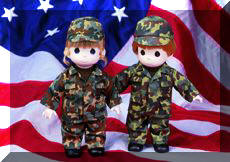 |
|
Some have
dreamed of donning a uniform since they were children |
On
the front lines are sharp, bright young men and women who fight for
honorable
reasons. Some have dreamed of donning a uniform from the
day they were old enough to choose a future. Others
believe their duty as a citizen is to fight for the freedom of others,
and can't fathom how anyone would question that responsibility, or
take honor in dodging that duty.
Embedded reporters witness the courage and heroism of American troops
daily, from the scene of a young man or woman kneeling and praying
over a dead enemy, to the recent Special Operations rescue of American
POW Pfc. Jessica Lynch. They see the military is composed from
the ground floor up, not the generals down. They see the
military is the ultimate form of democracy, for it is the belief of
the troops in the foxholes in the flag and its principles that
motivates them to die for their country, not the generals who issue
such orders. Embedded reports quickly realize the generals
of war are the privates and sergeants who form the front lines.
The embedded reporter becomes part of the flow that pumps through the unit. He or she realizes that
the many parts make up a whole, and that each soldier or Marine is as
important as the other, all bound together to fight an enemy whom they
collectively believe is the Beast of Terror, bent on Terrorizing the
world if left alone.
The embedded reporter starts to see America from a vista that is
impossible to see from a detached view. Inside the body,
the embedded reporter learns what it is like to be willing to die for
a principle. They learn that the sacrifice of life being
offered is not blindly given, but offered from a rich reservoir of
beliefs handed down from one generation to another.
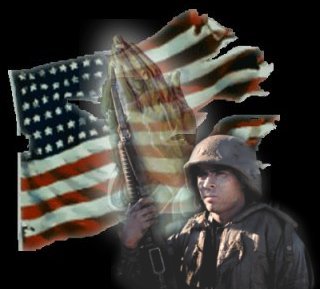 |
| Journalists
will see American Courage overcoming Fear.... |
The
embedded reporter begins to see the true
America is represent by the willingness of hundreds of thousands of
America's finest young people to die for the freedom of others.
They realize that true patriotism isn't more complicated than the
willingness to die so others might be free.
When the
reporters live and eat and breathe with the young Warriors of
Vigilance, and ask the same question hundreds upon hundreds of times:
"Why are you here?" they will get the same core answer--"to free the
people from Terrorism."
At
first, skeptical, caustic, wary journalists flinch at such an answer.
It seems like a platitude to them. It sounds like they've
been brainwashed.
But after living with the
troops day after day, taking the enemy fire, fighting back, freeing
people, suffering losses and casualties, the embedded journalist
begins to morph into the body. That which was one
different from, becomes similar to. Barriers and
walls that separated the two--military and press--now crumble for both
sides are soaked in each other's blood.
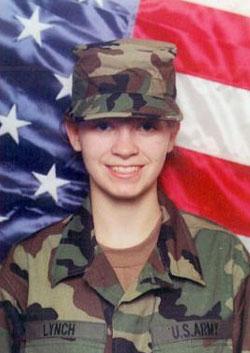 |
|
Pfc. Jessica
Lynch was rescued |
As the journalists see American Courage overcoming
Fear, American Conviction battling Intimidation, and American
Right Action fighting to preserve the rights of the Children's
Children's Children the skin of the onion is peeled.
Inside is the pulp of the warrior. It is a man or
woman, willing to die for others for no other reason than
to give them freedom.
The American warrior is not after spoils of war, not after
conquests. He or she only wants to go home,
safely, and hope that the blood spilled during the war
will fertilize freedom.
The embedded journalist sees this. Feels this.
Becomes part of this simplistic belief in fighting for
freedom.
Now, the journalist faces a dilemma.
What is the truth?
Is the truth an effort to find fault with America?
Is it to promote the errors of American strategy or tactics?
Is it to demean and understate the power of American resolve?
Is it to attack the institution of power?
Or, is the truth the simple truth--that the overriding
reason why American troops are fighting the war in Iraq
is for their flag--so that the Iraqis might one day enjoy
the freedoms they enjoy?
Could it be so simple?
Could it be the embedded reporter learns that America's
will to fight and win the war in Iraq is directly proportional
to the belief each of the soldiers, marines, airmen and
navy personnel have in dying for the freedom of others?
Perhaps the essence of the war in Iraq can be summed up
with the rescue of Pfc. Jessica Lynch. Perhaps
all the news that fit to print can be the answer to the
question asked of Pfc. Lynch: "Why were you
willing to die for America in a foreign land?"
The answer will amaze you, if you're not already amazed.
Embed yourself in Vigilance. Take the Pledge of
Vigilance today.

Apr.
1--How Walter Cronkite Ambushed Peter Arnett In Iraq
©2001
- 2004, VigilanceVoice.com, All rights reserved -
a ((HYYPE))
design
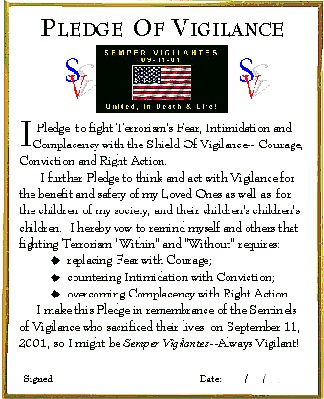
|
|
|